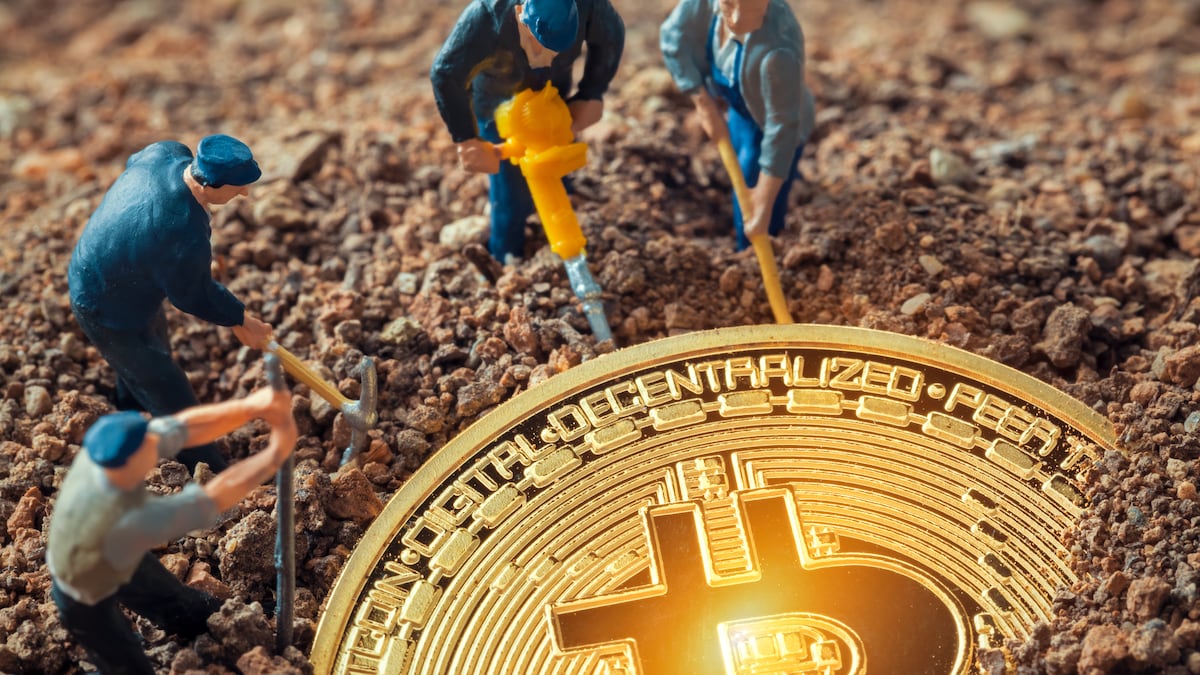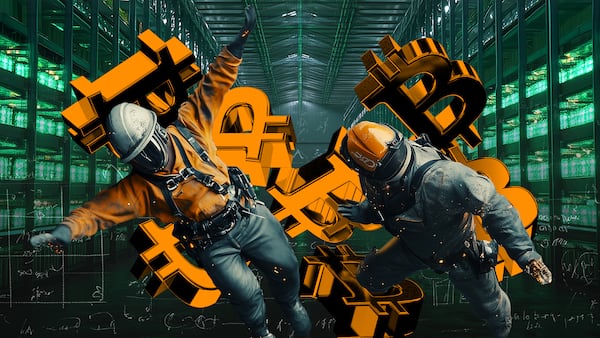- A key metric for Bitcoin mining is slumping.
- Trump’s trade war has made the business tougher.
- An existential threat?
It’s getting harder than ever to mine Bitcoin.
On Tuesday, network difficulty, which means how hard it is to mine a block, hit a new all-time high.
Meanwhile, a key measure of miner profits — known as hashprice — sits at $44, a sizable drop from earlier this year.
The 28% decline from its January levels is just above the $40 mark that many in the industry see as break-even or worse.
If it continues, this pressure may risk network security, lead to forced sell-offs of Bitcoin to cover costs, and encourage greater centralisation.
These factors could impact Bitcoin’s price stability and long-term trust in the largest decentralised blockchain.
Tough times
This scenario is especially hurting small miners.
“Rising difficulty squeezes hashprice,” Eli Nagar, CEO of mining outlet Braiins. told DL News. “Short-term margins tighten a bit, but stronger miners handle it fine.”
Nagar said that hashprice at $44 is “more of a breather,” but that most miners won’t relax until it reaches $60.
The profitability woes are in stark contrast to the crypto rally during the run-up to Donald Trump’s inauguration as president in January.
Bitcoin, along with most other major cryptocurrencies, hit all time highs as optimism soared Trump would end a regulatory crackdown and take other steps to support the industry.
Instead, crypto prices have tanked amid Trump’s trade war on China and other nations, and fewer investors are making Bitcoin transactions.
Some worried market watchers say this amounts to an “existential threat” to the leading cryptocurrency.
What is Bitcoin’s network difficulty?
Bitcoin’s network difficulty has never been higher.
The metric refers to the cryptocurrency’s self-adjusting security system that keeps new blocks coming in at a steady pace.
Bitcoin miners use specialised devices — ASICs — that try to find a random number. Every 10 minutes on average, a miner finds the number, earning the right to add a new block of transactions to the blockchain, and receive newly minted Bitcoin as a reward.
Block rewards sit at 3.25 Bitcoin or $274,000 these days. It was 6.50 Bitcoin worth $409,000 back before the halving of April 2024.
When difficulty reaches an all-time high, it means miners collectively are working harder than ever before to earn the same reward.
This squeezes profit margins, especially for miners with older, less efficient equipment or higher electricity costs.
The situation exposes the contrast between Bitcoin advocates and the mining industry.
In recent weeks, each time Bitcoin’s network difficulty topped a new record, advocates celebrated.
“More miners. More competition. More belief in Bitcoin,” wrote one user on Tuesday on social media.
Another, when difficulty soared just a few weeks ago, said that it’s a “strong signal of confidence in the future of Bitcoin.”
Miners, meanwhile, dampened the party.
“Who’s celebrating,” Nick Hansen, CEO of mining firm Luxor, told DL News. “Certainly not miners.”
Bitcoin miners of America
The situation is putting a particular strain on Bitcoin miners that operate on American soil.
That’s because they not only have to deal with soaring network difficulty but also Trump’s trade war.
A severe uptick in all imported goods from China means Bitcoin miners are now grappling with new total tariff costs for new machines that top 131%, said Hansen.
“Oh my god, it’s literally chaos everyday,” Hansen previously told DL News.
‘Higher difficulty just means more mining competition.’
— Eli Nagar, Braiins
The combination of Trump’s tariff war with rising network difficulty and a plunging hashprice spells disaster for the mining industry.
Disaster can come in many forms, one of which is consolidation, also known as centralisation. This is already creeping up, according to Blocksbridge consulting newsletter TheMinerMag.
Five companies command 21% of all Bitcoin being produced.
Existential threat or bullish signal?
All of this is further exacerbated by the meager network activity, which on Tuesday reared its ugly head again when a block was mined with a single transaction in it.
Hansen considers the lack of usage to be an “existential threat.”
A debate broke out last week when Bitcoin champion Jack Dorsey said that Bitcoin will fail if it continues its current trajectory of a store-of-value asset.
Strategy executive chairman Michael Saylor couldn’t disagree more.
Still, Nagar isn’t entirely fazed by the situation.
“Higher difficulty just means more mining competition,” he said. It’s a “bullish long-term signal that miners remain confident and committed.”
Pedro Solimano is a markets correspondent based in Buenos Aires. Got a tip? Email him at psolimano@dlnews.com.









